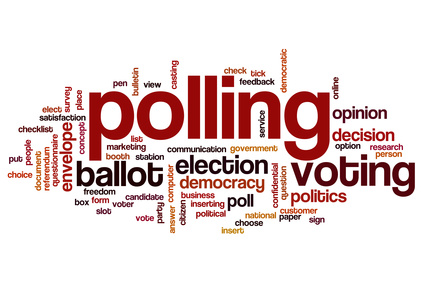The campaigns of GOP presidential nominee Donald Trump and U.S. Senator Chuck Grassley were eager to spread the word on Friday about the new Emerson College Iowa poll. Trump led Democratic opponent Hillary Clinton by 44 percent to 39 percent among Iowans sampled on August 31 and September 1, with Libertarian candidate Gary Johnson gaining 8 percent and the Green Party’s Jill Stein 1 percent. Grassley led Democratic challenger Patty Judge by 51 percent to 40 percent in the same poll.
Buried at the bottom of the polling memo and not mentioned in most of the related media coverage: Emerson sampled its 600 Iowa respondents on landlines only.
News reports on polls typically focus on the toplines. For example, Bloomberg’s headline on Friday declared that “Trump leads in Iowa,” while Cedar Rapids-based KCRG led with Grassley’s “strong lead” over Judge.
I was surprised by this paragraph in the polling memo:
The Emerson College Polling Society Iowa poll was conducted August 31-September 1. The sample consisted of 600 likely general election voters with a margin of error of +/- 3.9%. Data was weighted by 2012 election results, party affiliation, age and gender. It is important to remember that subsets based on gender, age and party breakdowns carry with them higher margins of error, as the sample size is reduced. Data was collected using an Interactive Voice Response (IVR) system of landlines only. The full methodology and results can be found at www.theecps.com .
I didn’t know serious pollsters still avoided sampling cell phones. Emerson College got a “B” in FiveThirtyEight’s pollster ratings, which noted a slight Republican lean for the firm’s results.
A shout-out to Mark Hensch, who noted in his story for The Hill, “Emerson College’s surveys have consistently found Trump running closer to Clinton than other polls concerning the 2016 race. Some pollsters have questioned the polls’ methodology due to the results relying solely on landline telephone interviews.”
I would add, those “interviews” did not involve a live caller. “Interactive Voice Response” is a fancy way to describe robocalling. Campaigns that can afford to pay for a live interviewer poll usually do so for their internal surveys. FiveThirtyEight.com and WNYC’s “On the Media” advise political junkies to look for polls using live interviewers:
Polls that use real, live humans to call people up and ask them what they think are more tested [and] have a better record than interactive voice response (“robopolls”) or online polls. Pollsters that use live interviewers can more easily reach a representative sample, while convenience online surveys and especially interactive voice response polls have trouble contacting some demographic groups — young people and nonwhite respondents, for example.
Charles Franklin, founder of the PollsandVotes.com website, has observed that Clinton generally does better against Trump in surveys using live interviewers. Perhaps that’s a function of IVR polls reaching fewer young people and racial minorities.
Also worth noting: whether pollsters should “weight” the results by party identification or other factors (as Emerson College does) has long been a controversial topic among professionals in the field.
I’ve long believed the presidential race in Iowa will be closely contested, and most leading forecasters view our state as a toss-up, so it wouldn’t shock me if Trump were a little ahead of Clinton now. But I’ll need more proof of that than a survey using automated calls to reach only landline users.
Like other recent Iowa polls, Emerson found both Clinton and Trump underwater on favorability. But to my knowledge, the Emerson poll was the first to find Clinton in worse shape (35 percent favorable/62 percent unfavorable) than Trump (37 percent/58 percent). Emerson also found only 78 percent of self-identified Democratic respondents back Clinton, while 86 percent of the Republican respondents support Trump.
Incidentally, if the Emerson sample did have a Republican lean, it’s not great news for Grassley that he’s ahead by 11 points. That’s roughly the same as his lead in other recent Iowa surveys, some of which showed Clinton ahead among Iowa voters. I would have expected a larger lead for Grassley among a group of Iowans who favor Trump by 5 points.
Like many Iowa politics-watchers, I would love to see the internal polling that prompted Grassley to run his first negative television commercial in a very long time. His campaign manager indicated last week that we’ll see more tv ads focused on Judge’s record before election day.
Getting back to the Emerson College poll, a spreadsheet with full results can be downloaded here. A couple of the findings are especially eyebrow-raising. Supposedly 34 percent of Iowans who backed Bernie Sanders in the caucuses are supporting a presidential candidate “other than Clinton.” Having talked with hundreds of Iowans who caucused for Sanders, I do not believe that a third of this group are still unwilling to vote for Clinton. “Bernie or Bust” appears to be a much smaller phenomenon than that.
Emerson also found Clinton running much more poorly among respondents in southeast Iowa than in northwest Iowa. If that pans out, I’ll be very surprised. As Emerson’s polling memo acknowledged, margins of error for subsamples in a poll are always greater than for the whole poll.
Any comments about the presidential race are welcome in this thread.

